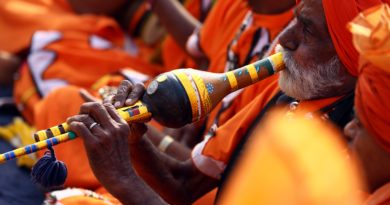Cultural and healthcare life of Wieliczka salt mines
The Wieliczka salt mines in Poland are a unique labyrinth forged by hard work, folk art and even natural medicine.
The incredible mines galleries were the source of inspiration of the Polish writer Bolesław Prus for his historical book Pharaoh published in 1895.
Wieliczka, very near from Krakow, is one of the oldest salt mines in the world still active.
A fabulous Catholic cathedral was built in the depths of the Polish salt mines.
Deepest place in the mines is 327 meters below the surface.
Congress in salt labyrinths at Wieliczka salt mines
The 44 Congress of International Society of Medical Hydrology and Congress of the Polish Association of Balneology and Physical Medicine are taking place in Wieliczka this week.
Numerous international entities such as FEMTEC the World Federation of Hydrotherapy and Climatotherapy have been invited.
FEMTEC gathers the public and private institutions that represent thermal establishments worldwide.
At present it has more than 30 member countries either statutory or affiliated.
FEMTEC, based in Italy, is the only non-governmental organization (NGO) in the sector entertaining official relations (accreditation) with the World Health Organization (WHO).
Also is in the Congress Solymed Travel Company, specialized in Health and Welfare Tourism.
Both institutions are sponsors of Wellness Destiny web magazine
A salt universe
The underground salt universe in Wieliczka is also a health center and a popular tourist destination in Europe.
Due to the high temperature inside mines, mineralization and geothermal waters is a wellness site for asthma cures.
Among the main topics of the congress is the modern balneological treatment of patients with chronic diseases.
It is also crucial issue underground therapy in treatments of respiratory diseases.
For centuries the salt mines of Wieliczka have raised world interest and prominent personalities.
Copernicus and the Pope visited sometime the salt mines
Historic personalities such as Nicolaus Copernicus, Johann Wolfgang von Goethe, Alexander von Humboldt and the Polish Pope Karol Wojtyła visited the mines.
Currently, a tourist can spend in its depths 14 days.
About 800,000 tourist visits the mines annually specially Europeans
Among these are those who suffer from asthma, who can receive treatments by a physiotherapist 130 meters underground.
The air inside the galleries of the mines has no contact with allergenic substances.
The walls of the mines are covered with saline material.
Underground Cultural life
The statues and monuments in the Wielczka mines were built by generations of Polish miners for centuries.
It is an authentic underground city made by human hands.
Churches and Kings are represented in the salt labyrinths
A crucial moment in a long tourist tour is the chapel of Santa Kinga.
It is a church that has been built by excavating thousands of tons of ore.
There is an immense statue of John Paul II illuminated by large chandeliers that hang from the ceiling.
Many secrets are also kept underground.
The largest monument of royalty weighs 15 tons, a formidable artistic work.
Wellness Destiny Photo Jacek Abramowicz




